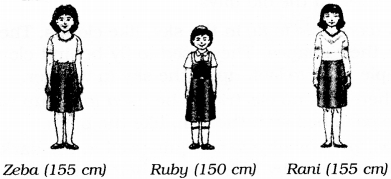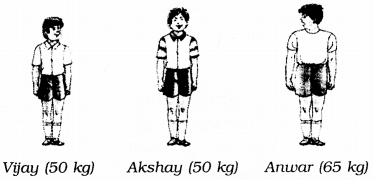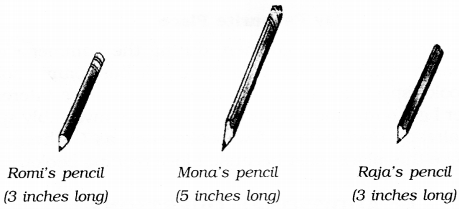NCERT Solutions for Class 6 English Honeysuckle Chapter 10 The Banyan Tree are part of NCERT Solutions for Class 6 English. Here we have given NCERT Solutions for Class 6 English Honeysuckle Chapter 10 The Banyan Tree.
| Board | CBSE |
| Textbook | NCERT |
| Class | Class 6 |
| Subject | English |
| Chapter | Chapter 10 |
| Chapter Name | The Banyan Tree |
| Number of Questions Solved | 8 |
| Category | NCERT Solutions |
NCERT Solutions for Class 6 English Honeysuckle Chapter 10 The Banyan Tree
TEXTUAL QUESTIONS
(Page 131)
Working with the Text
A. Complete the following sentences.
Question 1.
The old banyan tree “did not belong” to grandfather, but only to the boy, because ___________
Solution:
the grandfather was too old to climb it.
Question 2.
The small gray squirrel became friendly when ___________
Solution:
it found that the boy had no catapult or air gun.
Question 3.
When the boy started to bring him pieces of cake and biscuit, the squirrel ___________
Solution:
became quite bold and began to take morsels from his hand.
Question 4.
In the spring, the banyan tree ___________ and ___________ would come there.
Solution:
In the spring, the banyan tree was full of small red figs and birds of all kinds would come there.
Question 5.
The banyan tree served the boy as a ___________
Solution:
reading room where he had made his little library on a crude platform.
Question 6.
The young boy spent his afternoons in the tree ___________
Solution:
propping himself up against the tree with a cushion and reading story-books and spying on the world below.
B. Answer the following questions.
Question 1.
“It was to be a battle of champions.” (8)
(i) What qualities did the two champions have ? Pick out words and phrases from the paragraph above this line in the text and write them down. Mongoose Cobra
(a) __________ (a) __________
(b) __________ (b) __________
(c) __________ (c) __________
Solution:
| Mongoose | Cobra |
| (a) a superb fighter | (a) skilful |
| (b) clever | (b) experienced |
| (C) aggressive | (c) the speed of light |
(ii) What did the cobra and the mongoose do, to show their readiness for the fight ?
Solution:
The cobra hissed defiance. His forked tongue darted in and out. He raised half of his body off the ground and spread his broad hood. The mongoose bushed his tail. The long hair on his spine stood up.
Question 2.
Who were the other two spectators ? What did they do ? (Did they watch, or did they join in the fight ?) (10)
Solution:
The other two spectators were a myna and a jungle crow. They joined in the fight off and on.
Question 3.
Read the descriptions below of what the snake did and what the mongoose did. Arrange their actions in the proper order.
(11, 16)
|
(i) ceased to struggle |
|
| (ii) tried to mesmerize the mongoose |
|
|
(iii) coiled itself around the mongoose |
|
| (iv) struck the crow |
|
|
(v) struck again and missed |
|
|
(vi) struck on the side that the mongoose pretended to attack |
|
Solution:
|
(ii) tried to mesmerize the mongoose |
|
| (vi) struck on the side that the mongoose pretended to attack |
|
| (v) struck again and missed |
|
|
(iv) struck the crow |
|
|
(iii) coiled itself around the mongoose |
|
|
(i) ceased to struggle |
|
Question 4.
- What happened to the crow in the end ? (16)
- What did the myna do finally ? (17)
Solution:
- In the end the crow became a victim of the snake bite and died.
- Finally, the myna decided not to interfere. When the snake was killed, it hopped about and then flew away.
Working with Language
A.
Question 1.
The word ’round usually means a kind of shape. What is its meaning in the story?
Solution:
Here, it means a stage in the fight between the mongoose and the snake.
Question 2.
Find five words in the following paragraph, which are generally associated with trees. But here, they have been used differently. Underline the words.
Hari leaves for work at nine every morning. He works in the local branch of the firm of which his uncle is the owner. Hari’s success is really the fruit of his own labour. He is happy, but he has a small problem. The root cause of his problem is a stray dog near his office. The dog welcomes Hari with a loud bark every day.
Solution:
Hari leaves for work at nine every morning. He works in the local branch of the firm of which his uncle is the owner. Hari’s success is really the fruit of his own labour. He is happy, but he has a small problem. The root cause of his problem is a stray dog near his office. The dog welcomes Hari with a loud bark every day.
B. The words in the box are all words that describe movement. Use them to fill in the blanks in the sentences below.

1. When he began to trust me, the squirrel began _________ into my pockets for morsels of cake.
2. I saw a cobra _________ out of a clump of cactus.
3. The snake hissed, his forked tongue _________ in and out.
4. When the cobra tried to bite it, the mongoose _________ aside.
5. The snake _________ head to strike at the crow.
6. The birds _________ the snake.
Solution:
1. When he began to trust me, the squirrel began delving into my pockets for morsels of cake.
2. I saw a cobra gliding out of a clump of cactus.
3. The snake hissed, his forked tongue darting in and out.
4. When the cobra tried to bite it, the mongoose sprang aside.
5. The snake whipped his head back to strike at the crow.
6. The birds dived at the snake.
C. Find words in the story, which show things striking violently against each other.
1. The cobra struck the crow, his snout th ____________ ing against its body. (15)
2. The crow and the myna c ____________ II ____________ in mid-air. (13)
3. The birds dived at the snake, but b ____________ d into each other instead. (14)
Solution:
1. thudding
2. collided
3. bumped
D. Look at these sentences.
|
|
|
|
|
|
|
|
|
‘Would’ tells us what the author used to do. Or what used to happen. |
‘Could’ tells us what the author was usually able to do. Or grandfather is now not able to do. |
Choose would and could to replace the italicised words in the following sentences. Grandfather says, in the old days,
- elephants were able to fly in the sky, like clouds. They were also able to change their shapes. They used to fly behind clouds and frighten them. People used to look up at the sky in wonder.
- because there was no electricity, he used to get up with the sun, and he used to go to bed with the sun, like the birds.
- like the owl, he was able to see quite well in the dark. He was able to tell who was coming by listening to their footsteps.
Solution:
- elephants could fly in the sky, like clouds. They could also change their shapes. They would fly behind clouds and frighten them. People would look up at the sky in wonder.
- because there was no electricity, he would get up with the sun and he would go to bed with the sun, like the birds.
- like the owl, he could see quite well in the dark. He could tell who was coming by listening to their footsteps.
Speaking
Look at these sentences.
- The tree was older than Grandfather.
- Grandfather was sixty-five years old.
How old was the tree ? Can you guess ?
- The tree was as old as Dehra Dun itself.
Suppose Dehra Dun is 300 years old. How old is the tree ?
When two things are the same in some way, we use as … as. Here is another set of examples.
- Mr Sinha is 160 centimetres tall.
- Mr Gupta is 180 centimetres tall.
- Mrs Gupta is 160 centimetres tall.
Mrs. Gupta is as tall as Mr Sinha.
Use the words in the box to speak about the people and the things below, using as … as or er than

[Notice that in the word ‘hot, the letter “l’ is doubled when -er is added.]
Question 1.
Heights

Solution:
(a) Zeba is as tall as Rani
(b) Zeba is taller than Ruby
(c) Rani is taller than Ruby
(d) Ruby is shorter than either Zeba or Rani
(e) Zeba is as short as Rani
Question 2.
Weight Lifters

Solution:
(a) Vijay is as strong as Akshay.
(b) Anwar is stronger than Vijay.
(c) Anwar is stronger than Akshay.
(d) Anwar is stronger than either Akshay or Vijay.
Question 3.
City Temperatures

Solution:
(a) Shimla is as cold as Gangtok.
(b) Srinagar is colder than Shimla.
(c) Srinagar is colder than Gangtok.
(d) Srinagar is colder than either Shimla or Gangtok.
Question 4.
Lengths

Solution:
(a) Romi’s pencil is as short as Raja’s.
(b) Romi’s pencil is shorter than Mona’s.
(c) Raja’s pencil is shorter than Mona’s.
(d) Mona’s pencil is not as short as either Romi’s or Raja’s.
Question 5.
City Temperatures

Solution:
(a) Delhi is as hot as Nagpur.
(b) Delhi is hotter than Chennai.
(c) Nagpur is hotter than Chennai.
(d) Chennai is not as hot as either Delhi or Nagpur.
Writing
‘My Favorite Place
Read again the paragraphs of the story in which the author describes the banyan tree, and what he used to do there. Is there a place in your house, or in your grandparents’ or uncles’ or aunts’ houses, that you specially like ? Write a short paragraph about it, saying
- where it is
- what you do there
- why you like it
You may instead write about a place you dislike, or are afraid of.
Solution:
My Favorite Place
I have an uncle in Delhi. I go there during the summer vacation. My uncle’s house has a small but beautiful library. It has many books. Among them are the books specially meant for children. There are interesting story books. Whenever I go to my uncle’s, my afternoons are invariably spent in this library. I have already read quite a few books such as Gulliver’s Tales and Farm House. I like this place most because I love reading books.
We hope the NCERT Solutions for Class 6 English Honeysuckle Chapter 10 The Banyan Tree help you. If you have any query regarding NCERT Solutions for Class 6 English Honeysuckle Chapter 10 The Banyan Tree, drop a comment below and we will get back to you at the earliest.